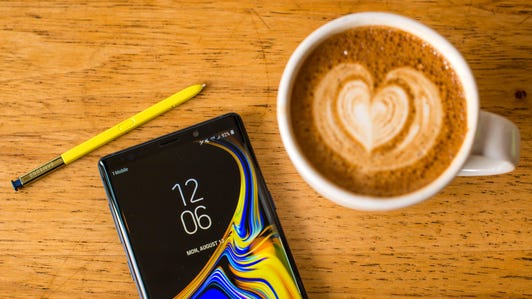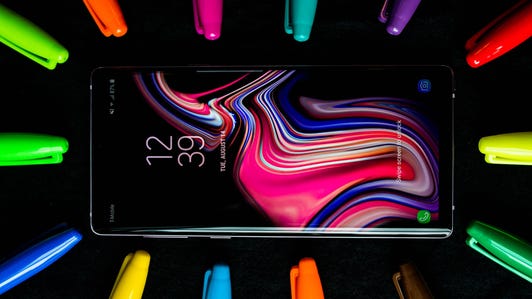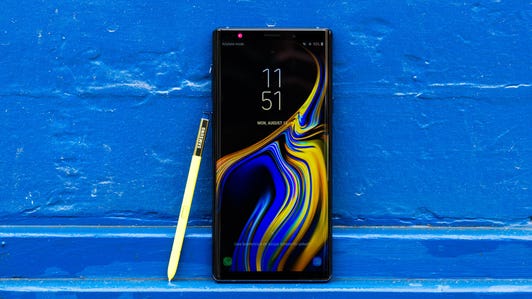The Note 9 is here. And with it, comes a long list of new features and capabilities. The S Pen, for example, can do all sorts of new things. The camera can even analyze your photos in real time and suggest when it’s time to take a new one.
As you set up your Note 9, we have a few suggestions for settings you should change right away.


Now playing:
Watch this:
Galaxy Note 9 is a superphone through and through
3:29
Change the navigation buttons


Screenshot by Jason Cipriani/CNET
By default, the navigation buttons on Samsung devices (from left to right) are recents, home, back. And that’s OK if you’re not used to the order of nearly every other Android device on the market: back, home, recents.
Thankfully you can switch the order to fit your preference in Settings > Display > Navigation bar > Button layout.
Use an SD card?
Of course you are! It’s one of the key selling features of any Samsung device, let alone the Note line. Make sure your photos and videos are stored where you want them, instead of just letting your Note decide.
Open the Camera app, tap on the Settings gear (next to the shutter button) then select Storage location from the menu. Select device storage or SD card, then back out of the settings pane.
Camera quick launch
Quick access to the camera is one of the key features on any phone, and for years Samsung devices have used a double-press of the power button to open the camera app no matter what the device’s current status is.
Make sure the feature is enabled in the Camera app by selecting the Settings gear and scrolling down to find Quick launch. Enable it, then test the feature by locking your phone and quickly pressing the power button twice. Boom, say cheese!
Icon frames are just weird


Screenshot by Jason Cipriani/CNET
Can Samsung just give up on app frames already? They just look weird and make app icons feel out of place. Go to Settings > Display > Icon frames and select Icons only to ditch the frames.
Change resolution
The Note 9 may have just been declared the best smartphone display ever, but using the phone at full resolution has an impact on battery life. Or, on the flip side, you may want to take advantage of every single pixel the Note 9 has to offer. Either way, you can customize the Note 9’s display resolution by going to Settings > Display > Screen resolution.
The middle option — FHD+, 2,200 x 1,080 — is a happy medium.
Tinker with Edge Panel
After setting up your Note 9, you’ll notice a small white bar on the right side of the screen. Swipe left across the bar to bring out the Edge Panel, where you’ll find app shortcuts, amongst other tricks.
The Edge Panel makes it easy to quickly switch between apps, launch two apps in split-screen at the same time, or check information in the various Edge Panels available.
Open Settings > Display > Edge screen > Edge panels to view pre-installed panels, rearrange the panels, or download more panels via the overflow menu (three-dot icon) in the top-right corner of the settings page.
…and Edge Lighting


Screenshot by Jason Cipriani/CNET
With Edge Lighting activated, the edges of the Note’s display light up as a means to draw your attention to the phone. If you place your phone face down on a table or desk, you can still see the colors light up due to the curved edges of the screen.
You can customize the light’s effect, color, transparency and width. You can even select which apps you want to use Edge Lighting. Go to Settings > Display > Edge screen > Edge lighting to customize your Note’s Edge Lighting functionality.
Avoid accidental touches
Accidentally calling someone or sending a text message full of gibberish as you place your phone in a pocket or backpack is annoying. Go to Settings > Display > Block accidental touches to enable a feature that will use various sensors to detect when it’s in a dark place, like a pocket or bag, and block any accidental touches.
Galaxy Note 9 looks stunning in these photos






+69 more
Using a screen protector?
The Note 9 has a nice display, so it’s only natural you’ll want to put a screen protector on it. A potential downside of screen protectors is that it can interfere with the touch sensitivity of the screen. At the very bottom of Settings > Advanced features is an option called Touch sensitivity. Enable this feature if you are having issues with the display after installing a screen protector.
Fingerprint sensor gestures


Screenshot by Jason Cipriani/CNET
With the Note 9’s display growing in size, reaching to the top of the screen to pull down the notification shade can be a stretch. Instead, use the fingerprint sensor as a trackpad of sorts, with a swipe down across the sensor revealing your notifications.
Turn on gestures in Settings > Advanced features > Finger sensor gestures.
Additionally, if you want to use the fingerprint sensor to launch Samsung Pay with a swipe up, you can enable it here.
Get rid of Bixby
When you grow tired of accidentally triggering Bixby by pressing its dedicated button — disable it.
Since the Note 9 doesn’t officially launch until Aug. 24, my Note 9 is still running evaluation software, and it lacks some of the settings to completely disable Bixby. Ultimately, I would suspect when Bixby is updated for launch it will include the same settings found in this post.
In the meantime, you can ditch Bixby Home with a long-press on the homescreen followed by swiping to the right until Bixby Home is displayed, where you can slide the switch to the Off position.



